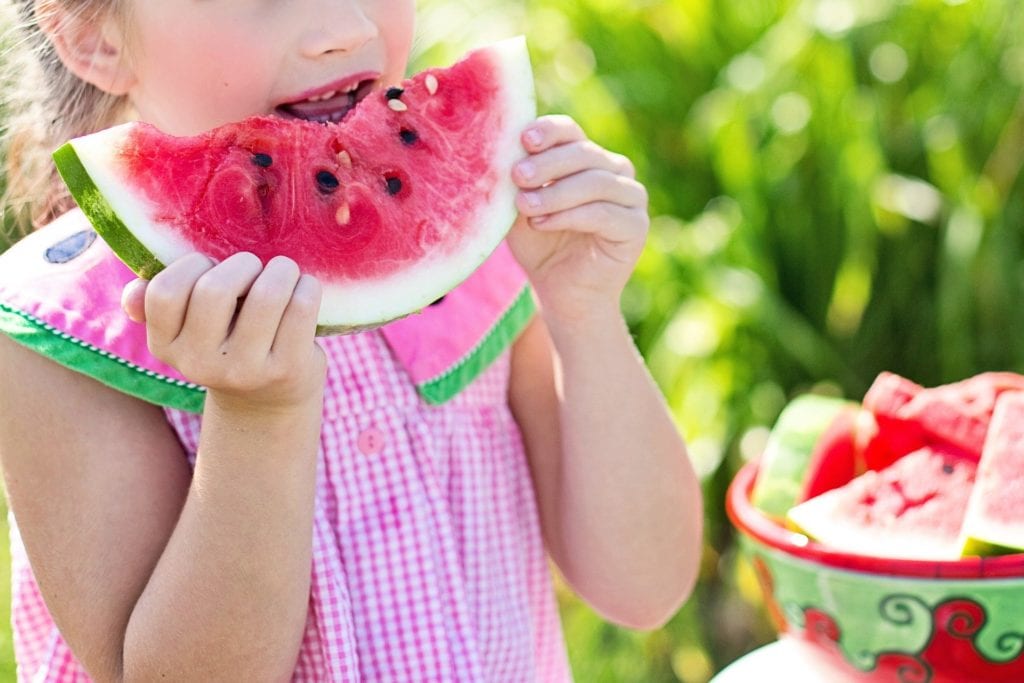I was watching with amazement yesterday as our grandchildren devoured their watermelon. (Of course, watching little ones at snack time can be of great entertainment to us Baby Boomers!) Our two-year old grandson was only interested in having me scoop out the luscious red fruit so he could slurp up the juice that surfaced!
Over and over again we played this “game!” Then I realized it wasn’t a game, he was actually fulfilling part of his fluid intake with all that juice. No dehydration for him! His little body instinctively knew this was a tasty way to rehydrate after a fun-filled romp at the beach earlier in the day.
TROUBLE CAN CREEP UP QUICKLY
We forget that water is a vital nutrient; life is simply not possible without it. Our bodies are about 50-70 percent water, and because we can’t readily store or conserve it, we can only live on average three to five days without it.
We lose water daily through breathing, perspiring, and urinating (a small amount is also lost with bowel movements). If we don’t replace it, dehydration can set in, leading quickly to urinary and kidney problems, seizures, and even death from low blood volume, which compromises the heart and other body systems.
Babies, older adults, and some people who are ill are most sensitive to dehydration. For seniors, a decreased ability to conserve water and a reduction in thirst sensitivity intensify the problem. Chronic illnesses and medications also affect thirst. Lack of mobility can cause seniors to limit water intake.
And many health professionals believe thirst is not a good indication of hydration in elderly adults. In fact, because of their low water reserves, it may be prudent for the elderly to learn to drink regularly when not thirsty.
HOW MUCH IS ENOUGH?
Contrary to what you may believe, no official recommendation exists for plain water requirements. The most commonly repeated advice we hear is, “Drink eight 8-oz glasses of water per day.” As much as I have researched, there just is no hard science to support this statement. But it’s become the mantra because it’s easy to remember, and for most people, it fills the bill.
Recommendations do exist for total water intake—that is, from all beverages and foods.
The National Academies of Sciences, Engineering, and Medicine recommends:
- For women—approximately 2.7 liters (91 ounces) of total water each day
- For men—approximately 3.7 liters (125 ounces daily) of total wa-ter
- About 80 percent of total water intake comes from drinking water and other beverages (including tea, coffee, juices, sodas, and drinking water)
- The other 20 percent comes from food (think: watermelon, soup, spinach, etc.)
FOODS WITH NATURALLY HIGH WATER AMOUNTS
So for those of you who are not big water drinkers, here are 10 refreshing foods you can eat to help fend off dehydration during hot summer months. Added benefit: along with their high water content, these foods contain lots of phytochemicals, naturally-occurring nutrients that help us stay healthy at all times!
- Lettuce, 96% water
- Cucumbers, 95%
- Celery, 95%
- Tomatoes, 94%
- Zucchini, 94%
- Watermelon, 92%
- Strawberries, 91%
- Cantaloupe, 90%
- Peaches, 89%
- Oranges, 88%
For more information to stay hydrated and keep fitness in mind during the summer, give me a call.

